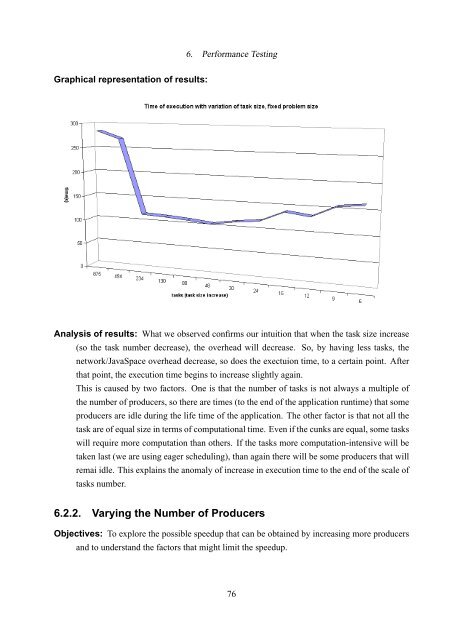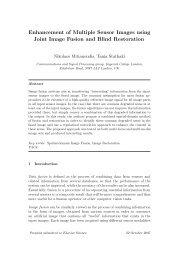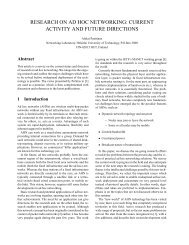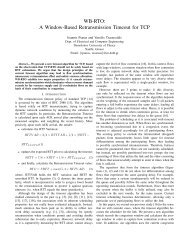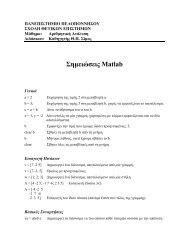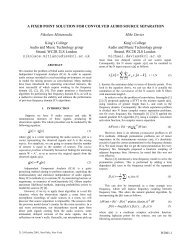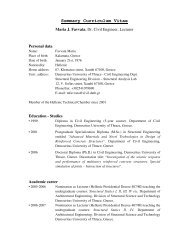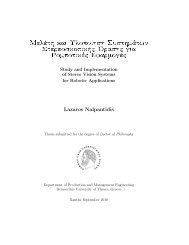a Grid Computing System - Utopia
a Grid Computing System - Utopia
a Grid Computing System - Utopia
You also want an ePaper? Increase the reach of your titles
YUMPU automatically turns print PDFs into web optimized ePapers that Google loves.
Graphical representation of results:<br />
6. Performance Testing<br />
Analysis of results: What we observed confirms our intuition that when the task size increase<br />
(so the task number decrease), the overhead will decrease. So, by having less tasks, the<br />
network/JavaSpace overhead decrease, so does the exectuion time, to a certain point. After<br />
that point, the execution time begins to increase slightly again.<br />
This is caused by two factors. One is that the number of tasks is not always a multiple of<br />
the number of producers, so there are times (to the end of the application runtime) that some<br />
producers are idle during the life time of the application. The other factor is that not all the<br />
task are of equal size in terms of computational time. Even if the cunks are equal, some tasks<br />
will require more computation than others. If the tasks more computation-intensive will be<br />
taken last (we are using eager scheduling), than again there will be some producers that will<br />
remai idle. This explains the anomaly of increase in execution time to the end of the scale of<br />
tasks number.<br />
6.2.2. Varying the Number of Producers<br />
Objectives: To explore the possible speedup that can be obtained by increasing more producers<br />
and to understand the factors that might limit the speedup.<br />
76


